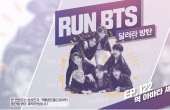Home > Feature
K-pop ads taking over Seoul subway
By Yim Hyun-su
Stations like Hongdae and Gangnam are plastered with messages from fans to their favorite idols
Traveling around Seoul on the subway, you’ll often see enormous advertisements featuring fan messages to K-pop idols.
As K-pop groups like BTS gain a more prominent place on the global stage, at home in Seoul they are dominating public transport.
 |
| An ad placed by GOT7 fans at Jongro 3-ga Station (Yim Hyun-su/The Korea Herald) |
Aya, a K-pop fan from Japan, was happy to find a fan-funded ad with a birthday message for BTS bandmate Jimin at Hongdae Station, placed in honor of the singer’s 24th birthday.
 |
| An onlooker at Hongdae Station takes a photo of an ad celebrating BTS member Jimin’s birthday. (Park Ju-young/The Korea Herald) |
Another fan who also stopped to take photos of the ad expressed similar sentiments.
“As a fan of BTS, I’m happy to see the group in the subway like this,” the fan said.
The number of subway K-pop ads is on the rise, according to data provided by Seoul Metro.
The figure had reached 1,576 as of September this year, a sharp increase from 2014 when there were only 76 K-pop-themed ads on display in Seoul’s subway system.
It has become a tradition among K-pop fans to raise funds and show support for their favorite idols through message ads. In return, the stars sometimes show up in front of the ads and take selfies to show their appreciation.
 |
| An ad at Apgujeong Station reads, “Happy Sooheok Day!” (Yim Hyun-su/The Korea Herald) |
The K-pop fan-message ad phenomenon is not confined to Korea.
In August, a group of Chinese fans placed an ad on a Times Square billboard celebrating the seventh anniversary of actor Park Seo-joon’s debut.
Placing an advertisement on the Nasdaq stock exchange building’s digital billboard for 15 seconds every hour for a week was estimated to cost $30,000 as of December.
 |
| Fans celebrate Wanna One member Lai Guan-lin’s birthday with an ad at Hapjeong Station. (Park Ju-young/The Korea Herald) |
K-pop has emerged as an unlikely source of income for Seoul Metro, which is losing billions each year despite accommodating millions of passengers on a daily basis.
Depending on the location, it can cost anywhere from 1.5 million won to 4.5 million won ($1,300-$4,000) before taxes to place an ad for a month.
Not all ads are acceptable to Seoul’s transport authorities, especially since new advertising standards were put in place in late June.
In 2017, Seoul Metro announced plans to remove all plastic surgery ads by 2022 after facing criticism for promoting narrow beauty standards.
Political ads also face stricter rules, so much so that a birthday message for a political figure like President Moon Jae-in would have to be turned down for violating rules on maintaining political neutrality.
The strict advertising standards proved controversial after some pro-feminist message ads were rejected, prompting officials to revise the rules.
By Yim Hyun-su (hyunsu@heraldcorp.com)




























